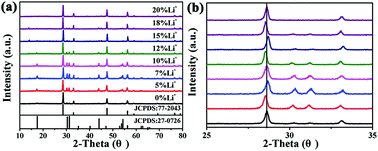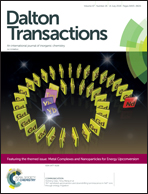A temperature sensor based on the enhanced upconversion luminescence of Li+ doped NaLuF4:Yb3+,Tm3+/Er3+ nano/microcrystals
Abstract
In this paper, fluorescent and optical temperature sensing bi-functional Li+-doping NaLuF4:Ln (Ln = Yb3+, Tm3+/Er3+) nanocrystals were synthesized via a simple hydrothermal method using oleic acid as a capping ligand. The crystal phase, size, upconversion (UC) properties, and optical temperature sensing characteristics of the crystals can be easily modified by Li+ doping. The results reveal that additional Li+ can promote the transformation from the hexagonal phase to the cubic phase and reduce the size of the nanocrystals. In addition, NaLuF4:Ln (Ln = Yb3+, Tm3+, Li+) nanocrystals present efficient near infrared (NIR) emission, which is beneficial for in vivo biomedical applications due to the increased penetration depth and low radiation damage of NIR light in bio-tissues. More importantly, under 980 nm excitation, the temperature dependent UCL from the 2H11/2 and 4S3/2 levels of Er3+ ions in NaLuF4:Yb3+,Er3+,Li+ microcrystals was investigated systematically. The fluorescence intensity ratios (FIR) of the pairs of thermally coupled levels were studied as a function of temperature in the range of 298–523 K. The maximum sensor sensitivities were found to be about 0.0039 K−1 (523 K) by exploiting the UC emissions from the 2H11/2 and 4S3/2 levels. This suggests that the Li+-doped upconversion luminescence (UCL) materials are promising prototypes for application as multi-mode probes for use in bio-separation and optical thermometers.

- This article is part of the themed collection: Metal Complexes and Nanoparticles for Energy Upconversion


 Please wait while we load your content...
Please wait while we load your content...